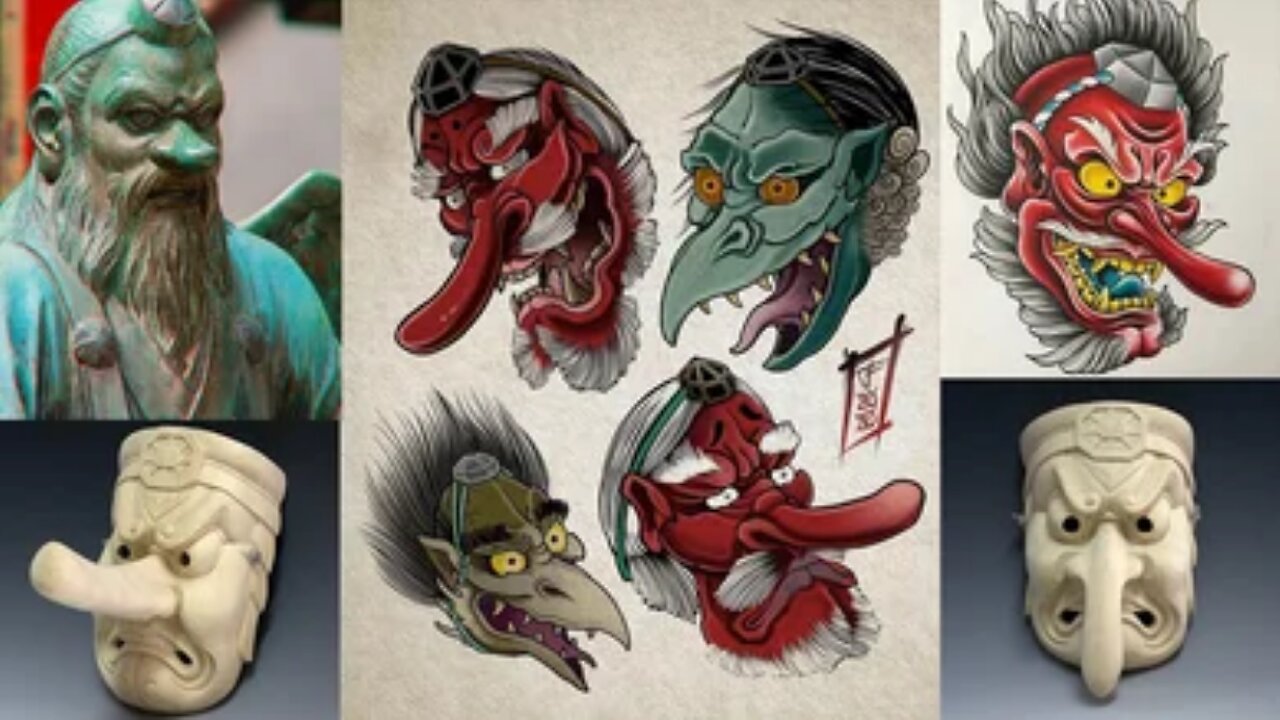Premium Only Content

TENGU by Duncan Onzog (jews in Japan)
Original description:
Tengu (Japanese: 天狗, lit. "Heavenly Dog" or "Heavenly Sentinel") are a type of legendary creature found in Japanese folk religion. They are considered a type of yōkai (supernatural beings) or Shinto kami (gods). The Tengu were originally thought to take the forms of birds of prey and a monkey deity, and they are traditionally depicted with human, monkey, and avian characteristics. Sarutahiko Ōkami is considered to be the original model of Konoha-Tengu (a supernatural creature with a red face and long nose), which today is widely considered the Tengu's defining characteristic in the popular imagination. He is the Shinto monkey deity who sheds light on heaven and earth. Some experts theorize that Sarutahiko was a sun god worshiped in Ise region prior to the popularization of Amaterasu.
Buddhism long held that the Tengu were disruptive demons and harbingers of war. Their image gradually softened, however, into one of protective and even manifestations of Buddhist deities, if still dangerous, spirits of the mountains and forests. Tengu are associated with the ascetic practice of Shugendō, and they are usually depicted in the garb of its followers, the yamabushi.
The term tengu and the characters used to write it are borrowed from the name of a fierce demon from Chinese folklore called tiāngǒu though this still has to be confirmed.
During the 14th century, the tengu began to trouble the world outside of the Buddhist clergy, and like their ominous ancestors the tiāngǒu, the tengu became creatures associated with war.
Tengu are worshipped as beneficial kami (gods or revered spirits) in various Japanese religious cults. For example, the tengu Saburō of Izuna is worshipped on that mountain and various others as Izuna Gongen (飯綱権現, "incarnation of Izuna"), one of the primary deities in the Izuna Shugen cult, which also has ties to fox sorcery and the Dakini of Tantric Buddhism. Izuna Gongen is depicted as a beaked, winged figure with snakes wrapped around his limbs, surrounded by a halo of flame, riding on the back of a fox and brandishing a sword. Worshippers of tengu on other sacred mountains have adopted similar images for their deities, such as Sanjakubō (三尺坊) or Akiba Gongen (秋葉権現) of Akiba and Dōryō Gongen (道了権現) of Saijō-ji Temple in Odawara.
-
 22:00
22:00
Staged Chessboard
11 days agoThe Japanese are Jewish - Japanese TV Special linking Japan to jews
88 -
 LIVE
LIVE
vivafrei
10 hours agoEp. 252: Liberals DISQUALIFY Candidate from Race! DOGE Wins & Loses; Rumble Sues BRAZIL! & MORE!
20,049 watching -
 UPCOMING
UPCOMING
Josh Pate's College Football Show
1 hour agoCFB’s Top 12 Programs | TV Executives & Our Sport | USC Changes Coming | Early Championship Picks
63 -
 LIVE
LIVE
Vigilant News Network
5 hours agoUK Government BUSTED in Secret Plot to Extract Your Data | Media Blackout
1,210 watching -
 1:03:32
1:03:32
Winston Marshall
3 days ago"War On Children!" The DEMISE Of The West Starts With Schools - Katharine Birbalsingh
62K58 -
 48:02
48:02
Survive History
8 hours agoCould You Survive as a Sharpshooter in the Napoleonic Wars?
8.79K1 -
 12:03
12:03
Space Ice
8 hours agoSteven Seagal's China Salesman - Mike Tyson Knocks Him Out - Worst Movie Ever
5.68K13 -
 11:37
11:37
Degenerate Jay
8 hours agoJames Bond Needs Quality Over Quantity From Amazon
4.04K2 -
 15:23
15:23
Misha Petrov
8 hours agoTrad Wives & Girl Bosses Go to WAR!
6.59K26 -
 2:03:11
2:03:11
TheDozenPodcast
6 hours agoFootball villain fighting the state: Joey Barton
3.29K